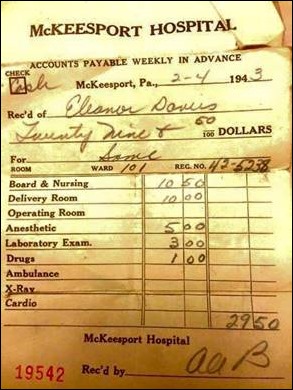Curbside Consult with Dr. Jayne 1/14/19
I’ve always wanted to attend the Consumer Electronics Show, but have never been able to get my January schedule to cooperate. That puts me with the rest of the tech aficionados in perusing various blogs and write-ups to find the best new healthcare-related gadgets.
This year’s CES booked 25 percent more vendors with a health focus, which equated to nearly 15 percent more floor space for health tech offerings. I’ve been poring over reports and write-ups and there were quite a few offerings this year that generated a lot of attention. I thought I’d share some of my favorites:
- Withings showed its Move ECG watch, which is kickily analog but still awaiting FDA clearance. As a physician, I’m not sure of the utility of real-time ECG monitoring for most patients, so it feels more gimmicky than anything else.
- The Y-Brush toothbrush claims to clean your teeth in 10 seconds using precision nylon bristles positioned at an optimal 45-degree angle. The recommended two minutes for brushing isn’t really that long, however, and I’m not sure the mouth guard-looking device is going to get much consumer uptake.
- The Hupnos sleep mask links with an app that listens to your snoring and triggers the mask to vibrate so that the wearer moves to a position that is less likely to result in snoring. The mask can also apply Expiratory Positive Air Pressure (EPAP) to help keep nasal passages open. I’ve been on a couple of flights lately where this device would have been a bonus.
- The Opte Precision Wand from Procter & Gamble’s venture capital division uses blue LED lights to identify dark spots on the skin. Over 100 thermal inkjet nozzles then apply skincare serums, moisturizer, or makeup to even skin tone. They should also consider tattoo covering cosmetics for workers whose employees have restrictive grooming policies, which I’m seeing more and more often in healthcare.
- Verde launched an electricity-generating treadmill that might let me generate enough juice to power the IPad that serves up enough Netflix to keep me sane on any treadmill-delivered workout.
- The Chronolife vest aims to monitor vital signs and use machine learning to predict the possibility of an impending heart attack. It will be marketed to healthcare providers, researchers, and insurance companies. FDA approval is still pending.
- Urgonight is a headset device that links with an app to track electroencephalogram (EEG) patterns to help train people how to generate sleep-enhancing brainwaves. Designers note that it takes three months of regular use to achieve results. It appeared on lists for both the coolest and weirdest devices at CES.
- The Matrix PowerWatch 2 uses solar power and body-generated heat to power its heart rate sensors, GPS, and notifications while linking with both Apple HealthKit and Google Fit . Designers boast that the GPS will last long enough to run a marathon, but it doesn’t specify the pace. I’m betting my marathon time would be substantially longer than its capacity.
- The EyeQue VisionCheck device hooks to a smartphone and provides data needed for vision-correcting eyeglasses. It skips the prescription, and at a price point near $30, it’s cheaper than a co-pay. For those of us who have uneven ears, it’s still worth the extra cost to have a real-life optical practice keep us seeing clearly.
- DFree offers bladder size measurement technology which can help urology patients know when to go. It’s available for purchase at a hefty $500, but can be rented for a $40 monthly trial. DFree is code for “diaper free” and is marketed to help manage incontinence including notifications to both patients and caregivers.
- Kohler’s smart toilet connects with Alexa along with an app-connected, spa-ready bathroom collection.
- ReSound Linx Quattro is a smart hearing aid that uses artificial intelligence to learn the wearer’s preferences and to adjust sound profiles. It also allows music streaming through hearing aids via apps for Android and iPhone. The devices are more than twice the cost of typical hearing aids.
- The Butterfly iQ is a personal ultrasound machine that uses an app to guide the user as he or she obtains images, which can be sent to the user’s healthcare provider. I’m sure physicians will be thrilled about that one.
- Samsung’s Bot Care is a personal health care assistant that can monitor blood pressure and heart rate. Reports beyond that are slim, and the write-ups I saw made it look more like an alpha offering.
- Other robots such as the ElliQ are designed to assist senior citizens while allowing family members to monitor from afar. It integrates a tablet to help seniors navigate social media, video calls, and texting, although it’s got a $1,500 price tag plus a monthly subscription.
Much like HIMSS, CES is full of demos and prototypes and the solutions aren’t always fully vetted or independently tested. It’s buyer beware with various startups and crowd-funding offerings. There were also some unusual products, including a Bluetooth diaper sensor to alert caregivers of recent deposits; a Sony outdoor speaker that includes integrated cup holders; a collapsible vintage cardboard camera; a robotic bread vending machine; a self-cleaning litterbox with text notifications; a bicycling safety vest with airbags; and a robot companion for dogs.
My favorite piece of non-health tech is the GoSun Fusion solar cooker, which can heat an oven to 550 degrees. It sports a Bluetooth thermometer to alert users when their food is done cooking and claims it can convert 80 percent of the sun’s light into heat while keeping the exterior cool. The company is also working on a solar-powered cooler unit, giving camping even more of a high-tech spin.
My thanks to CNET for the best coverage of CES and excellent links and photos. Maybe one of these years the scheduling stars will align and I’ll be able to request a press pass for CES. Las Vegas would be a lot more hospitable than the foot of snow I’m enjoying, so we’ll see what 2020 brings.
What was your favorite piece of news from the Consumer Electronics Show? Leave a comment or email me.

Email Dr. Jayne.

























Ageed Mike, "patients are the widgets that must be processed" additionally when it costs close to $3,700 a month for…